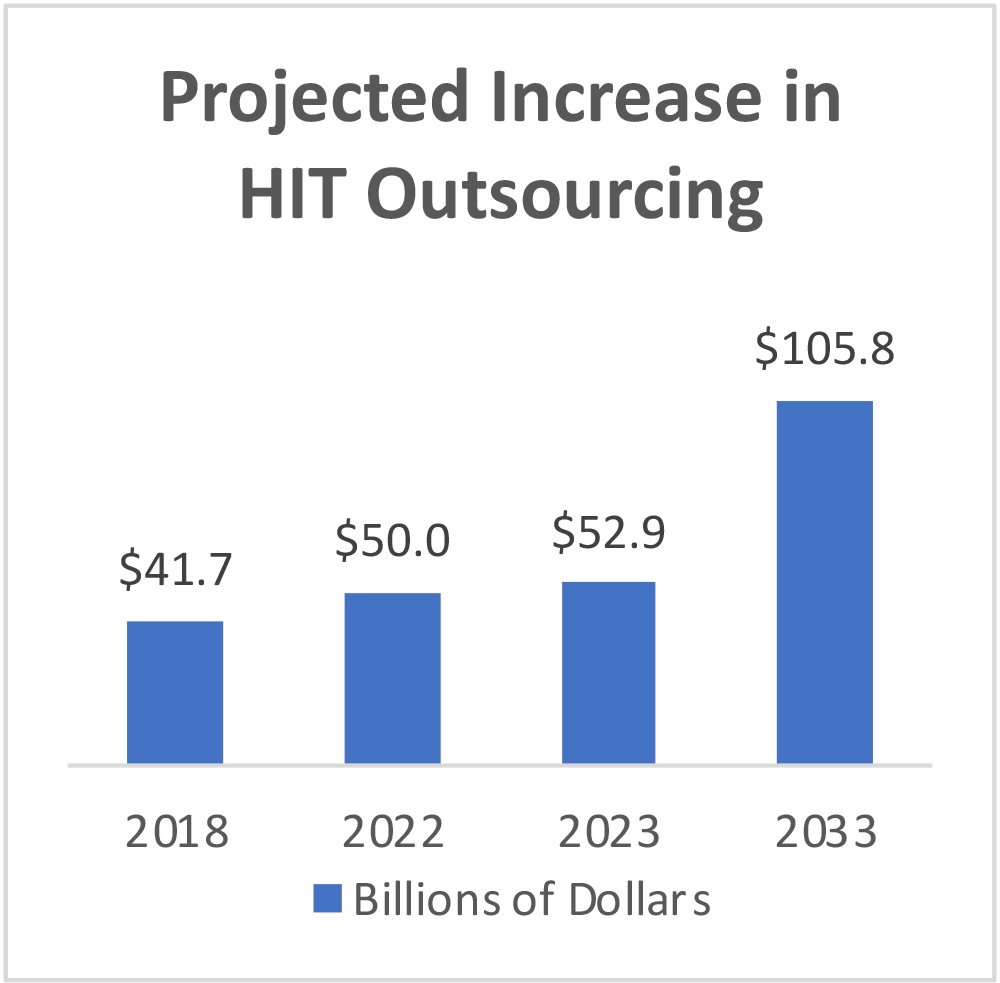After a devastating profit picture in 2022 and 2023, healthcare organizations are taking a deep breath and looking for ways to reset, beginning with IT.
Healthcare organizations recognize that new IT applications will streamline operations, reduce cost, and improve patient care. They also know that IT spending likely will increase. Yet, to better manage internal IT costs, healthcare organizations are outsourcing these new IT initiatives, while expecting internal IT staff to improve the efficiency of legacy systems.

Two megatrends are behind hospital IT project outsourcing:
- Post-COVID disarray. During COVID, IT areas were asked to undertake herculean tasks. They created apps to distribute and track vaccines, extended reach to tents and drive-ups, ramped up telehealth, set up remote work platforms, and patched all these new initiatives into existing security systems and EHRs. Under the pressures of the pandemic, architectural integration was suspended, costs became no object, inefficiency reigned. None of this was sustainable and now healthcare organizations are asking their internal IT areas to better align with current systems.
- IT staffing difficulties. Not surprisingly, HIT staff became as burned out as front-line providers. By 2022, 20% of hospitals faced critical staffing problems, including in IT, and wage pressure increased compensation by 16%,forcing a half of all U.S. hospitals to operate in deficits. Hospitals have little appetite to increase IT in-house staff.
As a result of these two trends, healthcare organizations are reeling. They face cost pressures from staff wage inflation, outdated and tangled systems, and, following COVID, changing models of patient care. CIOs are turning to third-party IT support to address these problems, help put their house back in order, and introduce new applications that improve patient access, patient care, and overall efficiencies.
The benefits of outsourcing IT projects
By outsourcing IT projects, healthcare organizations know they can leverage fresh, unbiased perspectives offered by third parties familiar with cutting-edge IT architecture and tools. Equally important, healthcare organizations can accomplish this without adding to head count.
Here’s what third-party IT outsourcing is accomplishing:
- Unbiased application rationalization. The typical healthcare organization has hundreds of redundant or outdated IT applications—resulting in inefficiency, wasteful expenditures, and organizational risk. Outsourced application rationalization optimizes the current portfolio to best support business goals at the lowest cost. A third party can more objectively prioritize criticality, business value, and technological fit. In addition, rationalization reduces unnecessary complexity and cost.
- More disciplined project management offices. Healthcare IT staff are seeking outside help to create consistent and repeatable processes. Again, conscious of headcount, these internal Project Management Offices are using outsourced Project Management Institute-certified consultants for short- or long-term needs.
- A return to governance models. “More” is no longer “better.” To rein in spending, healthcare organizations are instituting governance models that prioritize applications with the most payback for optimizing patient care in the most efficient way possible. External IT governance experts can more objectively make these calls. The ultimate goal for today is IT enablement and alignment.
There is a lot of work to be done, touching upon EHRs, cybersecurity, telehealth, AI, and patient engagement. IT project outsourcing could be the key to returning healthcare organizations to better clinical care, improved patient engagement, and stronger internal cost management.

